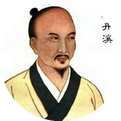
This article is summarized and organized based on the “Lecture Notes on the Fundamental Theories of Traditional Chinese Medicine” by Li Dexin, published by Renwei Press.Basic Treatment PrinciplesThe fundamental principle of treating diseases in Traditional Chinese Medicine (TCM) is to seek the root cause of the illness. This principle serves as a guiding framework for the treatment of diseases, providing a macro and holistic approach. The basic treatment principles embody the spirit of TCM concepts such as seeking the root cause of illness and play a guiding role in determining specific treatment methods or measures. The main principles include the following five aspects: Supporting the Right Qi and Eliminating Pathogenic Factors, adjusting Yin and Yang, harmonizing Qi and Blood, regulating the Zang-Fu organs, and managing the spirit.Supporting the Right Qi and Eliminating Pathogenic FactorsThe concepts of Right Qi (zheng) and Pathogenic Factors (xie) represent a fundamental contradiction that exists throughout the process of all diseases. The occurrence, development, and manifestation of diseases are determined by the dynamics of the struggle between Right Qi and Pathogenic Factors. Therefore, supporting the Right Qi and eliminating Pathogenic Factors is an important treatment principle for resolving this contradiction and guiding clinical treatment.The Concept of Supporting the Right Qi and Eliminating Pathogenic FactorsSupporting the Right Qi and Eliminating Pathogenic Factors is a general term for both supporting the Right Qi and eliminating Pathogenic Factors.1.Supporting the Right Qi: Also known as strengthening the foundation, this involves measures to support and enhance the body’s Right Qi, ensuring it is sufficient to eliminate Pathogenic Factors and restore health.Supporting the Right Qi refers to the principle of enhancing Right Qi, which involves using herbs or other therapies that support Right Qi, along with appropriate nutrition, mental regulation, and physical exercise to strengthen the body, improve its resistance to diseases, and achieve the goal of overcoming illness and restoring health.Eliminating Pathogenic Factors involves measures to expel disease-causing factors, allowing the Right Qi to recover and restore health.2.Eliminating Pathogenic Factors: This principle focuses on eliminating Pathogenic Factors to cure diseases, utilizing herbs or other therapies to expel these factors, thereby allowing the Right Qi to recover and restore health. The principle of “if there is excess, drain it” is a specific application of this principle.Application of Supporting the Right Qi and Eliminating Pathogenic FactorsAlthough Supporting the Right Qi and Eliminating Pathogenic Factors are two different treatment principles, they complement and support each other.Supporting the Right Qi enhances the Right Qi, helping the body resist and eliminate Pathogenic Factors, known as “when Right Qi is strong, Pathogenic Factors are expelled”; eliminating Pathogenic Factors can remove the harm and interference of these factors on the body, protecting the Right Qi and restoring health, referred to as “when Pathogenic Factors are eliminated, Right Qi is at peace”.When applying the principles of Supporting the Right Qi and Eliminating Pathogenic Factors, it is essential to carefully analyze the comparative strength of Right Qi and Pathogenic Factors, distinguishing between primary and secondary, and deciding whether to use them separately or in combination, as well as the order of application.Generally, Supporting the Right Qi is used for cases of Right Qi deficiency; Eliminating Pathogenic Factors is used for cases of excess Pathogenic Factors; if both deficiency and excess are present, both principles should be applied, but this does not mean they are applied equally; rather, the primary and secondary conditions should be clarified to determine the order and priority of application.In summary, the principle should be “supporting the Right Qi without leaving behind Pathogenic Factors, and eliminating Pathogenic Factors without harming the Right Qi”. The specific situations are as follows:1. Supporting the Right Qi: This is suitable for conditions primarily characterized by Right Qi deficiency, where Pathogenic Factors are not excessive.For example, in cases of Qi deficiency or Yang deficiency, it is advisable to use methods to tonify Qi and strengthen Yang; in cases of Yin deficiency or Blood deficiency, methods to nourish Yin and Blood should be employed.2.Eliminating Pathogenic Factors: This is suitable for conditions primarily characterized by excess Pathogenic Factors, where Right Qi is not deficient. Common clinical methods such as sweating, vomiting, purging, clearing heat, promoting diuresis, moving Qi, and invigorating blood are all guided by this principle, tailored to the specific conditions of the Pathogenic Factors.3.First Attack, Then Supplement: When Pathogenic Factors are excessive and Right Qi is deficient, and the Right Qi can still withstand some attack, it is advisable to first eliminate the Pathogenic Factors and then support the Right Qi, known as first attack, then supplement.This is applicable when Pathogenic Factors are excessive and Right Qi is deficient, but the Right Qi can still endure some attack; if both principles are applied simultaneously, it may inadvertently assist the Pathogenic Factors. For instance, in cases of bleeding due to blood stasis, if the stasis is not resolved, the bleeding will be difficult to stop; thus, it is necessary to first invigorate blood and resolve stasis before supplementing blood.4.First Supplement, Then Attack: When Right Qi is deficient and Pathogenic Factors are excessive, and the Right Qi is too weak to withstand attack, it is advisable to first support the Right Qi and then eliminate the Pathogenic Factors, known as first supplement, then attack. This is suitable for conditions where Right Qi is deficient and Pathogenic Factors are excessive, but the Pathogenic Factors are not urgent, and the body is too weak to endure attack.If both principles are applied simultaneously, not only will the Pathogenic Factors be difficult to eliminate, but it may also further harm the Right Qi; thus, it is essential to first use tonifying methods to support the Right Qi until it can withstand attack before addressing the Pathogenic Factors.In certain patients with parasitic infections, due to prolonged illness leading to significant Right Qi deficiency, immediate expulsion of parasites is not advisable; it is better to first strengthen the spleen and harmonize the stomach to support the Right Qi, and once the Right Qi has sufficiently recovered, then proceed with expelling parasites and treating the accumulation.5.Simultaneous Attack and Supplement: In cases where both deficiency and excess are present, and Right Qi and Pathogenic Factors are relatively balanced, both Supporting the Right Qi and Eliminating Pathogenic Factors should be considered, known as simultaneous attack and supplement.This is applicable for conditions where both Right Qi deficiency and Pathogenic Factors excess are present, but neither is particularly severe.In practical application, it is crucial to distinguish the primary relationship between Right Qi deficiency and Pathogenic Factors excess, and to apply them flexibly. For instance, if Right Qi deficiency is the primary concern, using tonifying methods alone may inadvertently assist the Pathogenic Factors; conversely, if only attacking the Pathogenic Factors may harm the Right Qi, thus in such cases, Supporting the Right Qi should be the primary focus while also considering the elimination of Pathogenic Factors. For example, in cases of Qi deficiency with a cold, the focus should be on tonifying Qi while also addressing the exterior.If the primary concern is Pathogenic Factors excess, solely attacking the Pathogenic Factors may harm the Right Qi, and solely tonifying the Right Qi may inadvertently assist the Pathogenic Factors; thus, in such cases, the treatment should focus on eliminating the Pathogenic Factors while also supporting the Right Qi. For instance, in the case of warm diseases where the Pathogenic Factors are excessive, and Yin fluids are depleted, presenting with high fever, profuse sweating, irritability, thirst, and dry throat, a treatment focusing on clearing heat while also nourishing Yin fluids would be appropriate.

This public account will regularly share knowledge about Traditional Chinese Medicine; feel free to scan the code to follow!

